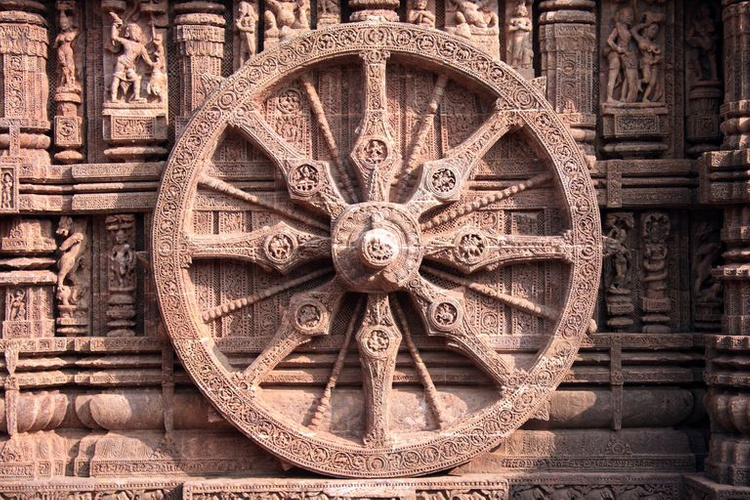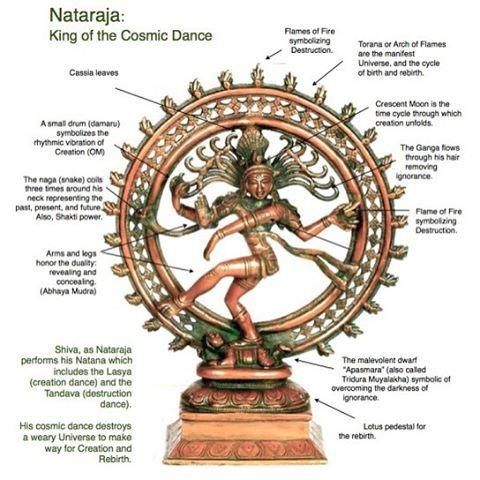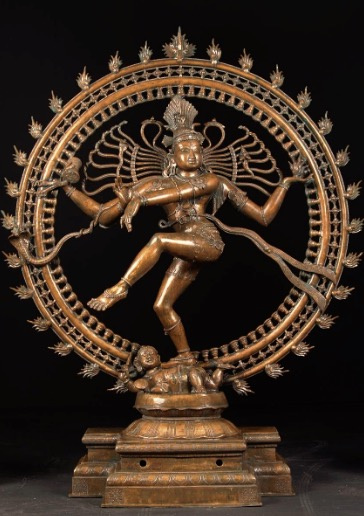What is Vedic? Pt. 3: Cyclical Time
- Jean Michel
- Mar 27, 2022
- 4 min read
Updated: May 11, 2022
A good place to begin studying the Vedic ideas is to look at how time is measured. Just as the sun arrives on the horizon every day and sets at the end of the day, the aeons of the earth arrive and depart likewise in a cyclical fashion.

Imagine a clock face with 24 hours and sub-divided into 4 sections. Each section signifies one part of the day - sunrise, noon, evening and night. We know that each part of the day is experienced differently, for example at noon the sky is very bright and warm in temperature; at midnight it is completely dark and cold, etc.
Now imagine the clock represents 24,000 years, and each of the 4 sections is a unique ‘age’ or ‘aeon’ that alters how life on earth is experienced, just like how the atmosphere feels fundamentally different at noon than at midnight. One revolution on this 24,000 year clock could be called ‘a great year’, and according to the Vedas our universe has gone through dozens and perhaps hundreds of these ‘great years’.
The Cosmic Wheel of Time
Each of the great year’s 4 ages are called yugas in Sanskrit: the Golden Age (Satya-yuga), Silver Age (Treta-yuga), Bronze Age (Dvapara-yuga) and Iron Age (Kali-yuga).
Each yuga offers unique potentialities for what humans are able to achieve during their lifetimes; variating customs that are emphasized within society; and each yuga is governed by different rulers with their own prescribed functions over human society.
The Golden Age is almost completely etheric, is highly spiritual, and the beings live extremely long lives. The Silver Age is slightly less spiritual with other unique conditions, and so on until the Iron Age, which is characterized as being spirituality deficient, materialistically driven, the humans are smaller in stature and live much shorter and more difficult lives.

According to the Vedas we are currently in the Kali-yuga Iron Age and entered it several thousand years ago. This is a difficult time period for all beings on earth, but a person is able to spiritually advance very quickly, whereas in the Satya-yuga it is more difficult to advance spiritually because it is already a highly spiritualized time.
Demoniac entities thrive during the Kali-yuga. Here are some other descriptions from the Srimad-Bhagavatam Canto 12 chapter 2 that may sound familiar:
“In the age of Kali, people’s minds will always be agitated ...
... law and justice will be applied only on the basis of one’s power.
Womanliness and manliness will be judged according to one’s expertise in sex, and a man will be known as a brahmana (sage) just by his wearing a thread ...
... one who is very clever at juggling words will be considered a learned scholar.
Cities will be dominated by thieves, the Vedas will be contaminated by speculative interpretations of atheists, political leaders will virtually consume the citizens, and the so-called priests and intellectuals will be devotees of their bellies and genitals.”
Despite the mathematical exactitude of the Vedic descriptions of the yugic cycle, there is still great debate about what ‘time it is’ in the great year. Today, there is no definitive model that can objectively prove to an outside observer what position we are at on the great year clock. (The scrolls and star maps in the stacks of the Vatican Library could likely provide us with this information, but access is strictly forbidden except for a tiny few approved scholars).
This is very important to remember because according to the Srimad-Bhagavatam the Kali-yuga is 432,000 years long, and we still have another 427,000 to go, which is an incredibly daunting prospect.
It is very possible there was an error, or even a deliberate alteration, when transferring this information during the crossover into the Kali-yuga. The article The End of the Kali Yuga in 2025: Unravelling the Mysteries of the Yuga Cycle builds a strong argument for the use of the Saptarshi Calendar, based on the Ursa Major constellation as the primary marker of the changes in the yuga cycle. According to this calculation, the Kali-yuga will end in 2025 and a transition period of 300 years into the Dwapara-yuga Bronze Age will begin.

The essential tool the ancients and modern researchers use is the sky-clock, and please see my article ‘Astrological Ages and Dating the Earth: An Introduction’ for an analysis on how the sky is used to measure time and how it relates to the so-called ‘Age of Aquarius’.
Also keep in mind there are transition periods between ages, and despite the vast disagreement on the exact time on the great year clock, many esoteric scholars suggest that we are near the end of the Kali-yuga, or are already in the transition into a new age.
Implications
In general, contemporary Western historians have a great difficulty in perceiving what life was like prior to the Kali-yuga in which we live. Their worldview says that life on earth was experienced in the same way 10,000 years ago as it is today. But after reading the Vedic books one can clearly see that this is simply not the case.
Many modern historians suffer from more than just a lack of imagination. There seems to be a literal veil in front of their mind’s eye that prevents them from perceiving profound realizations of historical value if they were able to grasp the above information about the earth’s ages and the unique potentialities within each age.
According to the Vedas, the past ages were populated by humans with profound abilities based on their level of consciousness, and rife with technologies that today would be deemed ‘magical’. Our current civilization circa 2021 is not the most advanced in human history, and this earth has hosted thousands of advanced societies prior to ours.
This simple understanding offers a major leap in consciousness to perceive the level of your true human value and potential. The Vedic material can help open up this door to the true history of our earth which is, above all, self-empowering.
Now that we have a groundwork of the vast time-scales that the Vedas describe, we can discover the library of texts that are giving us this information.
Further Reading:






留言